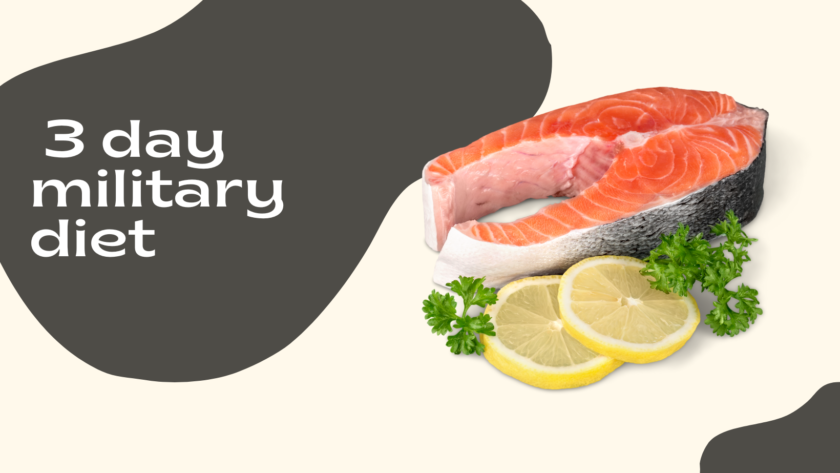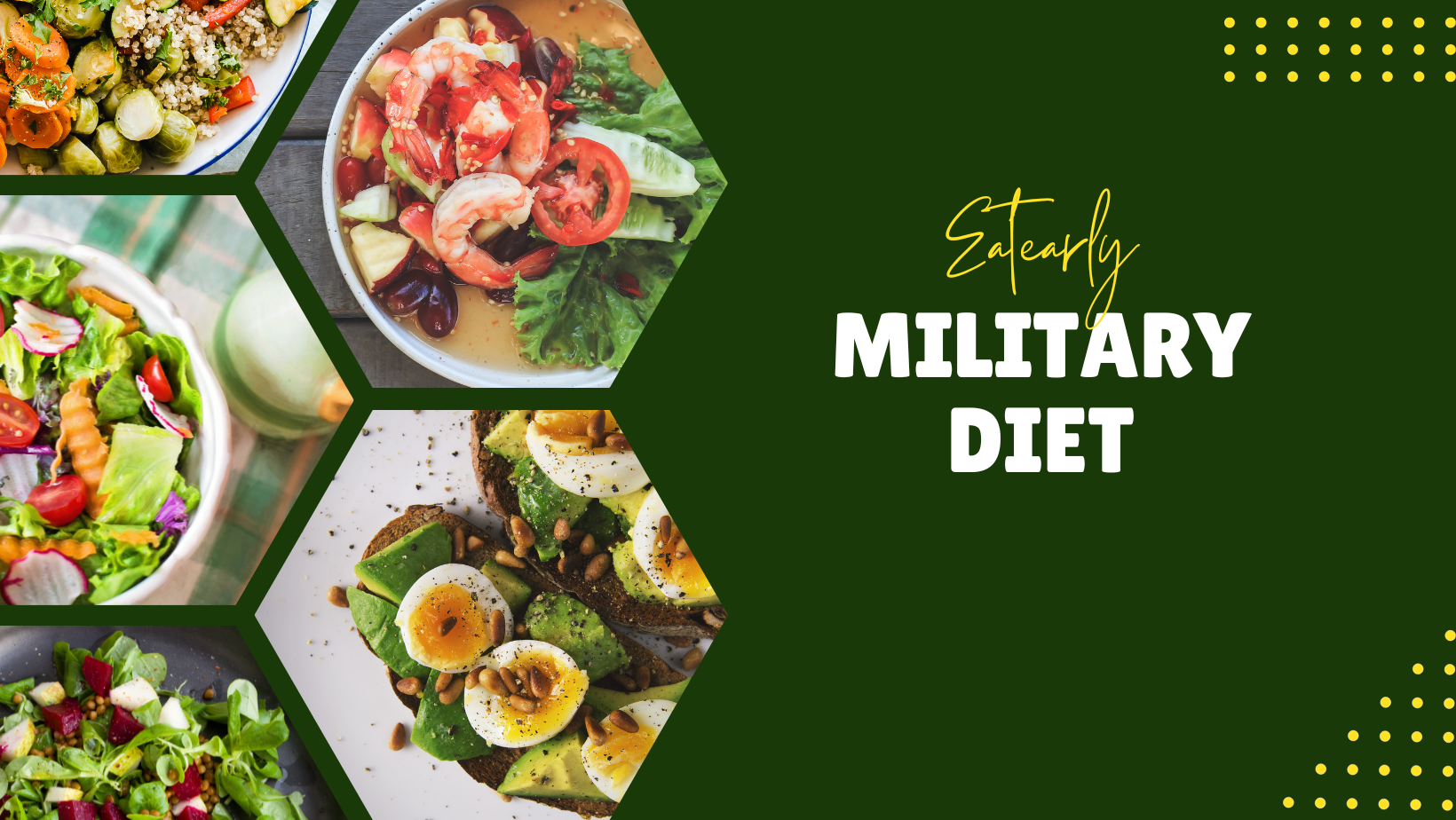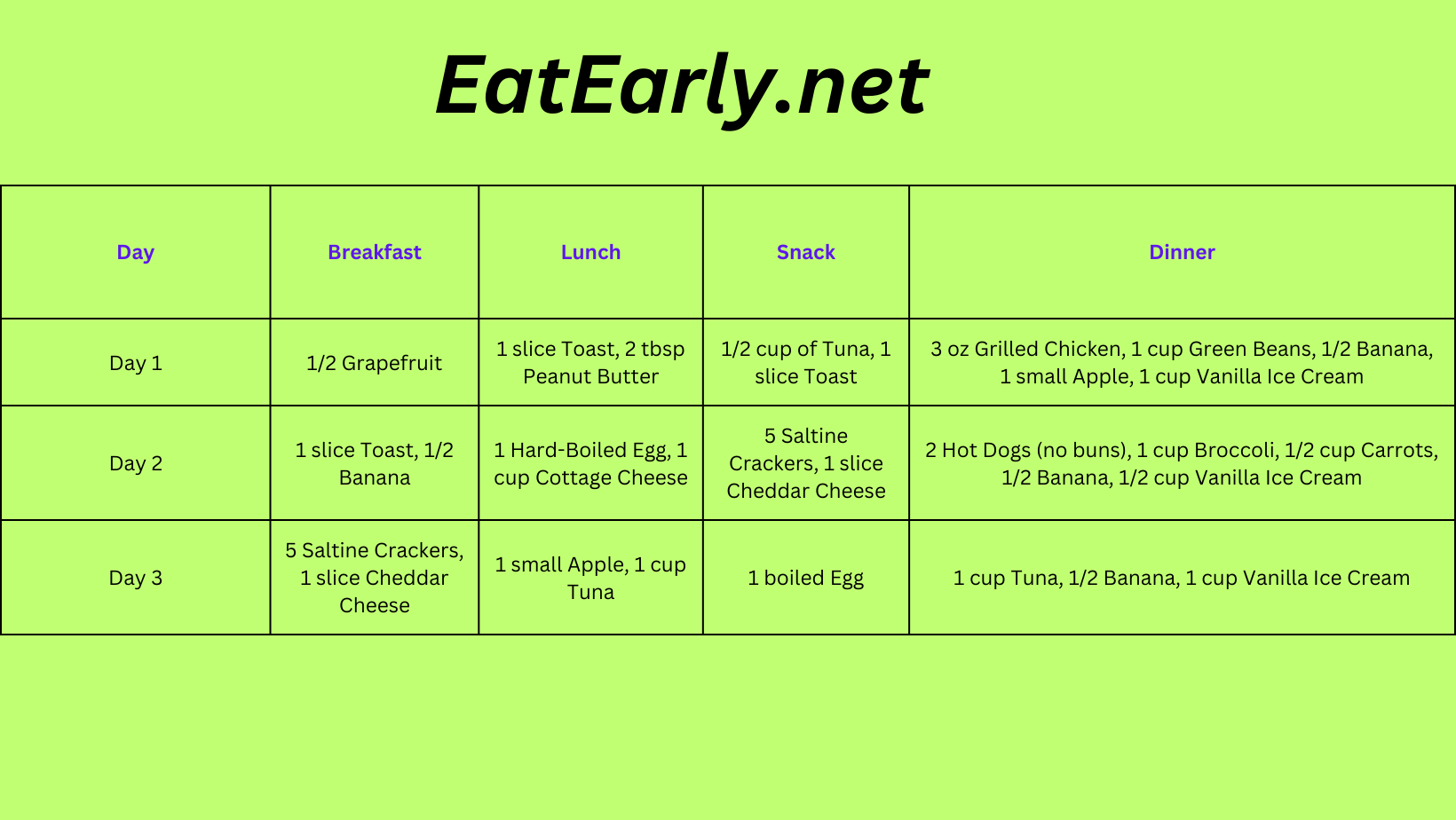Contents
- 0.1 Why Do We Need Substitutions for the Military Diet?
- 0.2 What are the Substitute Diets for the Military Diet?
- 0.3 List of Military Diet Substitutes
- 1 Healthy Alternatives to Military Diet
- 2 Vegetarian Substitutions for Military Diet
- 3 vegan military diet
- 4 Gluten-Free Substitutions for Military Diet
- 5 Planning your Meals with Substitutions in Mind
- 6 Final Thoughts
Ever embarked on the military diet plan and found yourself stuck with foods you don’t like or perhaps, can’t even eat due to dietary restrictions? Well, you’re not alone. This is where the need for military diet substitutions comes in. But why exactly do we need these substitutions, and what are they? Let’s dive in and find out, shall we?
Why Do We Need Substitutions for Military Diet?
First off, not everyone can stomach the idea of eating certain foods. You may be allergic, dislike the taste, or your body just doesn’t agree with them. Sometimes, it’s simply about wanting to mix things up a bit. Variety, after all, is the spice of life, right?
What are the Substitute Diets for Military Diet?
Don’t worry, there’s no shortage of options when it comes to alternative foods. From fruits and veggies to proteins and dairy, you’ll find a whole range of alternatives that cater to your specific needs.
Stay tuned as we’re about to unveil a comprehensive list of military diet substitutions. Ready to discover some exciting alternatives to the standard military diet food items? Let’s go!
Why Do We Need Substitutions for the Military Diet?
Ever wonder why we need substitutions for the Military Diet? Well, it’s simple. Not everyone can tolerate or enjoy every food item in the prescribed diet. Allergies, dietary restrictions, or simply personal taste can make some items unappealing or even harmful. Plus, let’s face it, variety is the spice of life! Having options can make the diet more enjoyable and easier to stick with. So, why not mix things up a bit?
What are the Substitute Diets for the Military Diet?
When we talk about substitutions, we’re not talking about completely altering the diet. Instead, we’re introducing alternate food items that preserve the core principles of the Military Diet: high protein, low fat, and low carbohydrates. These alternatives ensure that you can tailor the diet to your personal needs while still getting the desired results.
List of Military Diet Substitutes
Now, let’s get to the meat of the matter: the substitutions. The following list provides a range of alternative food items that can replace the standard ones in the Military Diet. Remember, the key is to keep the caloric intake and nutritional value similar.
- Instead of grapefruit, try oranges or baking soda in water.
- Instead of peanut butter, try almond butter or soy butter.
- Instead of green beans, try lettuce or tomatoes.
- Instead of vanilla ice cream, try apple juice or peach puree.
These are just a few examples. There are plenty more substitutions available, catering to various dietary needs and preferences. Go ahead, make the Military Diet your own!
Remember, substitutions are meant to enhance your dieting experience, not diminish it. They should make the diet more enjoyable, not less effective. So, ensure that any substitutes you choose align with the Military Diet’s principles. After all, the goal is to lose weight and stay healthy, isn’t it?
Healthy Alternatives to Military Diet
Alright, so you’ve heard about the military diet, right? This low-calorie weight loss plan is famous for its quick results, but let’s face it – it can be pretty tough to stick to. Maybe you don’t like grapefruit, or perhaps you’re vegetarian. Or maybe the idea of eating ice cream for dinner just doesn’t sit right with you. But don’t worry, that’s where substitutions come in! Let’s take a look at some healthy alternatives you can incorporate into your military diet.
What’s the Deal with Substitutions?
Substitutions are not just about catering for different taste preferences, they’re about health too. Some people may have food allergies or dietary restrictions that prevent them from following the standard military diet. In such cases, finding suitable swaps is crucial. The aim of a good substitution is to match the calories and nutritional content of the original food item. So, ready to find out what these substitutions are? Let’s dive in!
Substitutes List
- Grapefruit: If you’re not a fan, try half a teaspoon of baking soda in a glass of water instead. It offers similar benefits to grapefruit, promoting alkalinity in the body.
- Peanut Butter: If you’re allergic, sunflower seed butter or almond butter are great alternatives.
- Green Beans: Any green vegetable like spinach, lettuce, or broccoli will do.
- Meat: Vegetarians can opt for lentils, beans, tofu, or Portobello mushrooms.
- Ice Cream: You can swap this out for Greek yogurt or a fruit smoothie.
Remember, Balance is Key
While substitutions can help you stick to the military diet, it’s important to remember that balance is key. A successful diet is one that you can maintain in the long term, and that includes eating a variety of foods to get all the nutrients your body needs.
So there you have it! These are just a few examples of the myriad of substitutions available for the military diet. Keep in mind that these substitutions are here to help you tailor the diet to your needs, so don’t be afraid to experiment. After all, the goal is to find a diet that works for you, right?
Vegetarian Substitutions for Military Diet
Are you a vegetarian and concerned about following the military diet? No need to worry! You can still get the benefits of the military diet without compromising your dietary preferences. There are plenty of vegetarian alternatives you can incorporate into the military diet. Let’s dive into some of the vegetarian substitutions you can make.
1. Protein Substitutions
Instead of consuming meat, you can opt for lentils, beans, tofu, or portobello mushrooms. They are great sources of protein and fit well within the military diet. For example:
- Substitute 1 cup of tuna with 1/2 avocado and 2 tablespoons of hummus.
- Replace 3 ounces of any meat with 1 cup of cooked lentils.
2. Dairy Substitutions
If you’re a vegan or lactose intolerant, there are many non-dairy alternatives available. Almond milk, soy milk, or rice milk can be used instead of regular milk. Here are some options:
- Swap 1 cup of cottage cheese with 1 cup of unsweetened almond milk.
- Replace 1 cup of ice cream with 1 cup of fruit sorbet.
3. Bread Substitutions
Going gluten-free or just want to avoid bread? No problem! Try these alternatives:
- Substitute 1 slice of toast with 1/8 cup of sunflower seeds, or 1/2 cup of whole grain cereal.
- Replace 5 saltine crackers with 1/2 cup of quinoa.
Remember, the goal of the military diet is to consume fewer calories and lose weight. So, ensure your substitutions are in line with this goal. Keep portion sizes in check, and you’re good to go!
vegan military diet
Are you a vegan wondering if you can still follow the military diet? Good news! There are vegan-friendly alternatives that can easily adapt to your lifestyle. Let’s dive into the vegan military diet.
Vegan Substitutions for Military Diet
Meat, eggs, and dairy – the mainstays of the traditional military diet – are off the table for vegans. But don’t worry, there’s no need to feel left out. There are plenty of protein-rich vegan alternatives that can provide the same nutritional benefits without straying from your dietary restrictions.
- Tuna can be replaced with half an avocado
- Meat can be substituted with tofu or portobello mushrooms
- Ice cream can be replaced with a small serving of fruit sorbet
Remember, the key to this diet is maintaining the same calorie intake, so ensure your substitutions mirror the nutritional value of the original diet.
Sample Vegan Military Diet Meal Plan
Let’s have a look at a simple 3-day vegan military diet meal plan to give you an idea of how this might work:
Day 1
Breakfast: 1/2 Grapefruit, 1 slice of toast, 2 tablespoons of peanut butter
Lunch: 1/2 Avocado, 1 slice of toast
Dinner: 1 cup of tofu, 1 cup of green beans, 1 small apple, 1/2 banana, 1 cup vanilla soy ice creamDay 2
Breakfast: 1/2 banana, 1 slice of toast, almond butter
Lunch: 1 cup of tofu, 5 saltine crackers
Dinner: 2 portobello mushrooms, 1 cup of broccoli, 1/2 banana, 1/2 cup of vanilla soy ice creamDay 3
Breakfast: 1 slice of toast, a small apple
Lunch: 1/2 avocado, 5 saltine crackers
Dinner: 1 cup of tofu, 1/2 banana, 1 cup of vanilla soy ice cream
Just like the traditional military diet, the vegan military diet is followed by four days of healthy, balanced eating. So, ready to take the challenge?
Gluten-Free Substitutions for Military Diet
When following the military diet, you may find yourself asking, “What if I can’t eat gluten?” No worries, friend! There are plenty of gluten-free substitutions available to ensure you can stick to your diet while satisfying your dietary restrictions. Let’s explore some of these, shall we?
Day 1
- Breakfast: Substitute the toast with a gluten-free bread option. Many brands offer a variety of gluten-free breads these days.
- Lunch: Again, swap out the regular bread for a gluten-free alternative. You can also replace the tuna with chicken or tofu if you prefer.
- Dinner: Enjoy your green beans and lean protein as is – they’re naturally gluten-free. Instead of regular ice cream, opt for a gluten-free brand or frozen yogurt.
Day 2
- Breakfast: Breakfast is pretty gluten-free friendly as is. Enjoy the banana and eggs. Instead of toast, have a gluten-free slice of bread.
- Lunch: Where you see bread, think gluten-free bread. The egg and cottage cheese are gluten-free as is.
- Dinner: This meal is also pretty gluten-free friendly. Just make sure your hot dogs are without gluten – check the packaging to be sure!
Day 3
- Breakfast: Replace the cheddar cheese with a gluten-free version and enjoy your small apple as is. As always, go for gluten-free bread instead of regular toast.
- Lunch: Crackers can be replaced with rice cakes or gluten-free crackers. The egg and cheddar cheese should be gluten-free.
- Dinner: The tuna and fruit can be enjoyed as is. Be sure to read the labels of canned foods to ensure they’re gluten-free.
A gluten-free diet doesn’t have to mean you’re missing out on the military diet. Use these substitutions to make the diet work for you, while also catering to your dietary needs. Remember, each substitution should still align with the diet’s properties – low in calories, but high in protein and healthy fats. Eating healthy has never been this flexible!
Planning your Meals with Substitutions in Mind
Planning your meals might seem like a hefty task, right? Especially when certain items on the military diet plan simply don’t align with your taste buds or dietary restrictions. But worry not! With a few clever substitutions in mind, you can navigate your way around the military diet plan while still enjoying your meals. Here’s how!
Understanding Your Dietary Needs
Before you start making substitutions, it’s crucial to understand your dietary needs. Are you allergic to a particular food item? Are you on a vegan or vegetarian diet? These are some of the questions you need to answer while planning your meals. Once you know what you want to avoid, you can start looking for alternatives.
Choosing the Right Substitutions
Not all substitutions are created equal. You must ensure that the substitutes you choose are not just palatable but also nutritious. For instance, if you’re substituting tuna, it should be with a protein-rich food item. Let’s break down some possible substitutions for the military diet.
- For protein: You can substitute tuna with grilled chicken, tofu, or almonds.
- For grains: If whole grain bread is not your thing, swap it with a tortilla wrap, a rice cake, or even half a protein bar.
- For dairy: Dairy-free alternatives like soy milk, almond milk, or coconut milk can replace regular milk.
- For fruits: If you’re not a fan of apples, you can replace them with peaches, pears, or a small portion of dried fruits.
Remember, the key here is to replace food items with similar nutritional values. This way, you maintain the integrity of the military diet while making it more suitable to your preferences.
Creating a Balanced Meal Plan
Now that you know what substitutions you can make, it’s time to create a meal plan. Try to balance your meals with proteins, carbs, and fats while keeping your calorie intake in check. And remember, it’s alright to make changes as you go along. What’s important is that you’re eating healthily and enjoying your meals.
With proper planning, the military diet can be adapted to fit anyone’s dietary needs. So, don’t let the strict meal plan deter you. Make the substitutions you need, and embark on your journey to a healthier you!
Final Thoughts
So there you have it! Now you know why substitutions for the military diet are necessary and what those substitutions can be. But let’s take a moment to reflect on everything we’ve discussed, shall we?
Remember, the goal here is to make the military diet work for you, taking into account your unique dietary needs and preferences. Whether you’re lactose intolerant, gluten sensitive, or just plain picky, there’s a substitution out there that can make this diet more palatable and sustainable for you.
Let’s recap our list of suggested substitutions:
- Tuna: Some great alternatives include grilled chicken, tofu, or almonds.
- Green Beans: You can swap these with any other green vegetable like spinach or broccoli.
- Vanilla Ice Cream: A healthier option could be Greek yogurt or a fruit smoothie.
- Coffee: Try green tea or herbal tea if you’re sensitive to caffeine.
And let’s not forget about the overall importance of variety in our diets:
A diverse diet not only keeps things interesting but also ensures that we’re getting a wide range of nutrients. It’s all about balance, right?
Finally, it’s important to remind ourselves that these are just suggestions. What works best for you might be different, and that’s okay. The key is to listen to your body and make adjustments as needed.
Remember, You’ve Got This!
Changing your diet can be challenging, but remember, you’re doing this for you! With the right substitutions, the military diet can become a more enjoyable and manageable part of your healthy lifestyle. Stay positive, keep experimenting, and don’t forget to keep your health and wellbeing at the forefront. You’ve got this!









